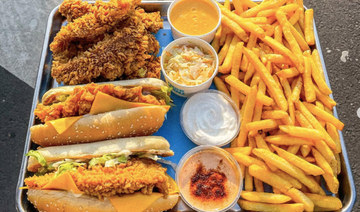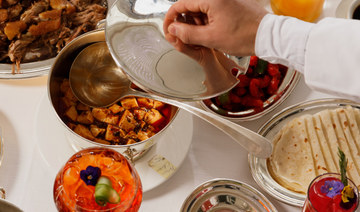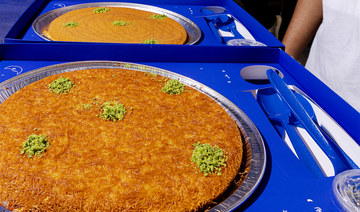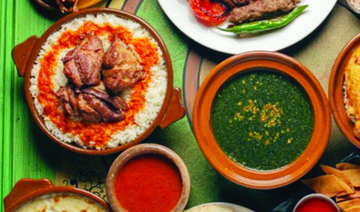In the last ten years The American University in Cairo Press has published several Egyptian cookery books. In 2006, Magda Mehdawy’s English translation of “Matbakh gidatty” (My Egyptian’s Grandmothers’ Kitchen), came out and the same year, John Feeney’s wonderful “Egyptian Soups: Hot and Cold” was also released in the market. A filmmaker, photographer and writer, New Zealand-born John Feeney arrived in Egypt in 1963; he came for a year but he stayed forty years! His love for Egypt: Its vivid colors and flavors come alive in a choice of unique and dazzling soups. The iced soups, made with Egypt’s juiciest and tastiest fruit: cantaloupe, guava and strawberry are simply out of this world and the Desert Truffle soup an everlasting experience.
“Authentic Egyptian Cooking” followed in 2013. The author, Nehal Leheta, shares with us the recipes for traditional Egyptian specialties in the iconic “Abou El Sid,” a restaurant celebrated for its “rich mélange of Egyptian flavors and its unique fusion of cuisine, décor, lighting, and music that conjure an Egypt of the golden age from the 1920s to the 1950s.”
However, I believe that “The Taste of Egypt” which has been published recently is the best Egyptian cookbook I have ever come across. It is written by Dyna Eldaief, an Australian born to Egyptian parents. Her mother is a talented cook and Dyna soon realized that her friends loved the food her mother prepared, especially the sweets.
As she grew up, Dyna was even more appreciative of the flavors and textures of her mother’s Egyptian cooking. However, after she married, she realized that she could not reproduce her mother’s dishes.
“She made them without a recipe. It was then that I decided to write a cookbook, made up of the recipes that my mother cooked for us when I was growing up,” she says.
Dyna recalls in the introduction of the book how challenging it was to put to paper the recipes that her mother had prepared many years without any measurements.
“My mother would say that you work out whether a dish is right by seeing what it looks like, smells like, and tastes like. How could I argue with that? But then again, how could I portray precisely in words a smell or taste that encompassed all her years of cooking experience? ... In practice this often involved many attempts at preparing each dish.”
Dyna’s passion for food and her constant efforts to come up with the best recipe, have contributed to the success of this book.
She has strived hard to concoct recipes that are easy to prepare. Professional cooks often publish books that either lack the proper explanations or are simply too complicated to follow.
I enjoyed the selection of “Snacks and Starters”. “Tahini”, according to Dyna is used “as a tasty, healthy, and dairy-free alternative to butter and margarine on an everyday basis, because tahini is high in calcium and several vitamins including Vitamins E,F, and several of the B-group of vitamins. It is also a richer source of protein than milk, soya beans, sunflower seeds, and most nuts.”
Tahini makes a delicious sauce with a creamy texture and a nutty flavor eaten with fresh or toasted bread, it can also be used as a sauce with fish and ta’miya, which are fried patties made basically with dried broad beans and coriander.
Besides the Tomato and Onion Salad, the Five Bean Salad and the Green Summer Salad, I noticed the presence of a simple but regal Artichoke Salad. This seasonal vegetable, which is an edible thistle, appears on the Egyptian market during the months of March and April. It was considered in Europe the aristocrat of the Renaissance kitchen garden. The monarchs of Europe, from the Medici in Florence, Henry VIII in England to Francois I and his court in France, loved artichokes. Incidentally, King Francois’s daughter-in-law, Catherine de Medici, ate so many artichokes at a wedding in 1575 that she nearly died of indigestion. For this simple but healthy “Artichoke Salad”, Dyna trims off the outer leaves. I prefer to admire the architectural beauty of this vegetable. I enjoy eating it slowly, a leaf at a time dipped in sauce. And when the outer garments have been plucked away, one can still feast on its tender green heart!
Another recipe “Roasted Artichokes in Red Pepper Sauce” makes use of artichokes in a creative manner and it highlights Dyna’s imagination and cooking skills. The Red Pepper Sauce made with tomato sauce, red pepper, basil and onion is poured over the hearts of artichokes filled with minced beef.
Dyna acknowledges that she mixes things up occasionally: “I often don’t plan too far ahead and will use what I have in the fridge or pantry, for example if I don’t have chickpeas for hummus I use butter beans which makes it creamier.”
Kobeba, Howawshi and Ma’saha are among her favorites: “It must be all that butter flavor that I love from Kobeba and Hawawshi. I particularly enjoy the aroma as it builds in the kitchen during cooking. But Ma’saha has a warming of the soul feel for me. Because whenever I even think of it I feel like a child again. Playing in the back yard with cut grass, seeds and leaves making my own “home cooked” food.”
Stuffed Pigeon is a well loved dish in Egypt but it is considered a festive dish and not one you eat on a daily basis. Pigeons are raised in picturesque mud-brick structures covered with holes which you see throughout the country. I have seen pigeons stuffed with rice or green wheat called fireek. Incidentally, fireek is difficult to obtain outside the Middle East and Dyna uses a mixture of both fireek and rice.
One of the most interesting dishes in the book has to be the “Fried Turkey and Apple Kofta,” this creative recipe is a welcome change from the ubiquitous beef or lamb kofta. “The apple is great with the mince because it adds tartness and lends some moisture to the kofta. This kofta is also coated in breadcrumbs which gives it a crunchy coating and makes it a lovely twist on traditional kofta,” explains Dyna.
Molokhiya is one of the most popular dishes in Egypt with Bamya or Okra. This green herb has the properties of okra and it is liked or disliked more for this than for its flavor. In the main course section, you will also find the lesser known Taro or colcassia, known in Egypt as “Ul’as”. There are two ways to prepare this vegetable. You can either cook it with minced beef and tomato sauce, or in a broth with Swiss chard and fresh coriander.
The selection of desserts are “a collection of the sweet things that we ate at home,” says Dyna who is like her mother, a superb pastry cook. Basbousa is a popular cake in Egypt made with semolina and we are treated to four versions of Basbousa including a Dairy-free Basbousa where the milk and yogurt are replaced with soy milk. My favorite sweet is the sweet flaky pastry know as “Fitir” which reminds me of the Breton “Kouign amann”. “
Kouign” is the Breton name for cake and “Amann” means butter. Unlike the Egyptian “Fitir” which does not contain sugar, the Breton “Kouign Amann” is made with layers of butter and sugar folded in a yeast dough.
It has the texture of a croissant with moist layers of dough all encased in a crunchy, caramelized shell and it is worth all its calories! The Egyptian “Fitir” is more versatile and it is traditionally eaten with cheese, or with honey and molasses. Dyna serves her own “Fitir” with berries, whipped cream and icing sugar!
In this book, Dyna gives us more than a taste of Egypt, she shares with us her genuine passion for food and she entices us to discover or re-discover Egyptian cooking: “Egyptian Cuisine for me is like the surprise chocolate in a lava cake. I believe Egyptian food is unique as the final product tastes distinctly different from that of its neighbors.”
—
Email: [email protected]
Mouthwatering Egyptian recipes ... with the magic of mother’s touch
Mouthwatering Egyptian recipes ... with the magic of mother’s touch
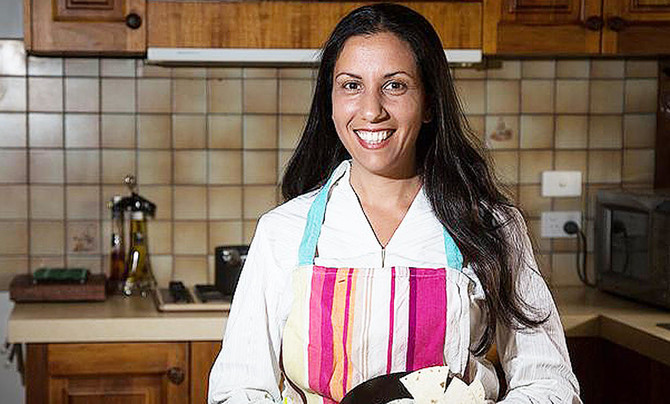
CDC says it’s identified 1st documented cases of HIV transmitted through cosmetic needles

- Many popular cosmetic treatments are delivered with needles, such as Botox to iron out wrinkles and fillers to plump lips
ALBUQUERQUE, N.M.: Three women who were diagnosed with HIV after getting “vampire facial” procedures at an unlicensed New Mexico medical spa are believed to be the first documented cases of people contracting the virus through a cosmetic procedure using needles, federal health officials said.
The Centers for Disease Control and Prevention said in its Morbidity and Mortality Report last week that an investigation into the clinic from 2018 through 2023 showed it apparently reused disposable equipment intended for one-time use.
Although HIV transmission from contaminated blood through unsterile injection is a well-known risk, the report said this is the first documentation of probable infections involving cosmetic services.

Many popular cosmetic treatments are delivered with needles, such as Botox to iron out wrinkles and fillers to plump lips. A “vampire facial,” or platelet-rich plasma microneedling procedure, involves drawing a client’s own blood, separating its components, then using tiny needles to inject plasma into the face to rejuvenate the skin. Tattoos also require needles.
The New Mexico Department of Health began investigating the spa in the summer of 2018 after it was notified that a woman in her 40s had tested positive for HIV even though she had no known risk factors. The woman reported exposure to needles through the procedure at the clinic that spring.
The spa closed in fall 2018 after the investigation was launched, and its owner was prosecuted for practicing medicine without a license.
The report said the investigation showed how important it is to require infection control practices at businesses that offer cosmetic procedures involving needles.
It also noted that the investigation was slowed by poor record keeping and said businesses providing such services should keep better records in case clients need to be contacted later.
Where We Are Going Today: ‘Tikka Khan’ delicious grilled chicken in Jeddah
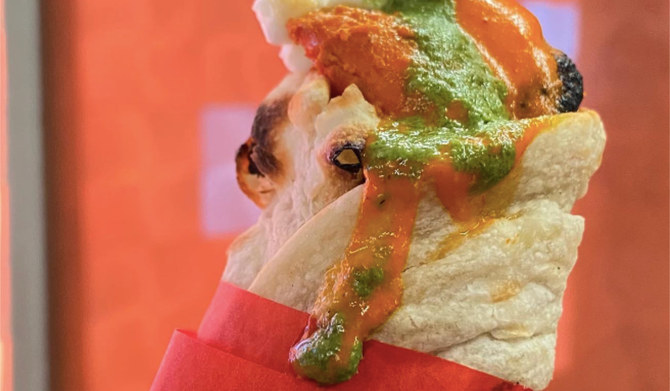
- This place specializes in Indian street food, with more than a nod to the classic dish from which it takes its name
As soon as you step inside Tikka Khan on Qassem Zeinah Street in Jeddah’s Rawdah district your senses will be treated to the unmistakable aroma of South Asian spices and grilled chicken.
This place specializes in Indian street food, with more than a nod to the classic dish from which it takes its name.
The marinated chicken, infused with a blend of yogurt, cumin, coriander, turmeric, chili powder, garlic and ginger, is grilled or roasted to perfection. Each bite bursts with rich aromatic flavors.
I tried two sandwiches — the tikka khan and the butter khan — and while both were delicious, the former was a clear winner.
The fresh naan bread loaded with succulent grilled chicken was simply delicious. It was also small enough that I was tempted to order a second.
The butter khan — unsurprisingly featuring butter chicken — is available in regular or spicy variations.
All of the wraps are made to order but the service is quick service so you will never have to wait long.
Besides wraps, Tikka Khan serves several other dishes, including tikka fries topped with grilled tandoori chicken and a tasty sauce, a tikka samosa stuffed with meat and served with chutney and tamarind sauce, and tandoori noodles with grilled chicken tikka, vegetables and a special sauce.
For more information, visit Tikka Khan on Instagram @tikkakhansa.
Where We Are Going Today: ‘TNDR’ fried chicken in Jeddah
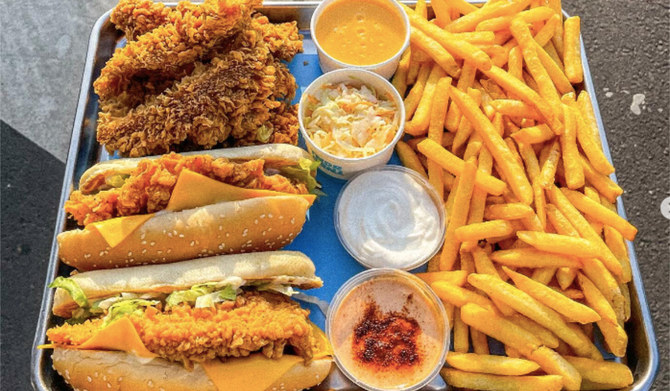
- The menu at TNDR is simple, focusing on what they do best: tender chicken fingers served with a variety of sauces, sodas, coleslaw salad, and, of course, fries
TNDR, the latest addition to Jeddah’s fast-food scene, offers mouthwatering tender fried chicken. With two drive-through locations in Rawdah and Al-Hamadaniah, TNDR promises a quick and satisfying dining experience.
The menu at TNDR is simple, focusing on what they do best: tender chicken fingers served with a variety of sauces, sodas, coleslaw salad, and, of course, fries. What sets TNDR apart is using locally sourced ingredients to create flavorful sandwiches and wraps.
One standout item on the menu is the TNDR Wrap, featuring four pieces of perfectly fried chicken, warm tortilla wrap with gooey melted cheddar cheese, crisp lettuce and garlic sauce, and fries, available in both regular and spicy.
I opted for the spicy one, the chicken was indeed very tender and crunchy, the wrap size was fair for a dinner meal, whilst what made every bite count was the warm cheddar sauce.
The second main is the TNDR Combo, a sandwich that features tender fried chicken in a fluffy bun, complemented by creamy garlic sauce, fresh lettuce, rich cheddar cheese sauce, and fries.
The logo of the brand is funky and imitates a graphic of a cool chicken standing by the order window wearing shoes. This playful design sets the tone for the fun and inviting atmosphere at TNDR.
For more information and updates, be sure to check out @tndr.sa on Instagram.
Recipes for Success: Chef Antonio De Crecchio offers advice and a gnocchi with duck ragu recipe
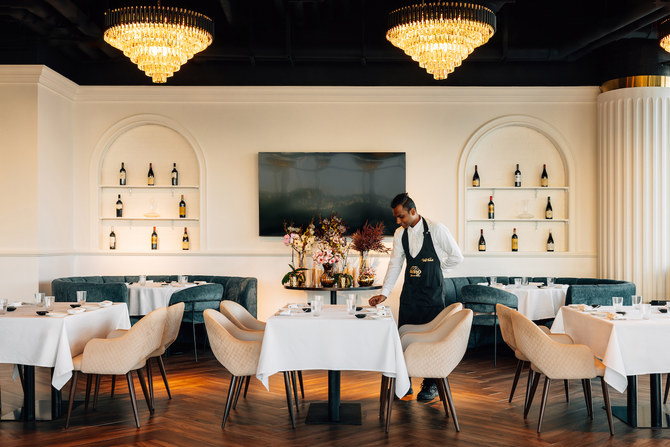
DUBAI: Antonio De Crecchio began his career back in 2006, working as a pizza chef in Naples, Italy. He was, he says, just 14 years old.
“I’ve always loved food and cooking, but that’s when I truly fell in love with cooking,” he tells Arab News. “My first boss was tough on me, but it taught me a lot about handling the job and pushing myself to get better.”

He continued to work as a pizza chef at various Rossopomodoro outlets across the UK, including London, Birmingham, and Newcastle, before returning to Italy to lead the team at Rossopomodoro in Torino and Milano. In 2019, he moved to the UAE, taking a job as pizza chef at Antica Pizzeria da Michele in Dubai. He is currently executive chef of Amò at Via Toledo in Dubai’s Address Beach Resort.
“Working here has been emotional for me,” he says. “After spending many years in a casual dining restaurant, opening a fine dining restaurant feels like reaching a higher level,” he said.
Here, De Crecchio — affectionately known as Chef Toto — discusses tips for amateur chefs, his love for Italian cuisine, and his most challenging dish.

What’s your top tip for amateur chefs cooking at home?
Invest in a Bimby. It’s a great tool for making pizza dough, ensuring that the result matches what you’d get at a restaurant. Plus it saves a lot of time, allowing you to focus on other tasks. Making dough correctly requires a lot of experience, so having the right equipment can make a big difference.
When you go out to eat, do you find yourself critiquing the food?
Yes. Often.
And what’s the most common issue that you find in other restaurants?
One thing I notice, especially with Italian food, is that the pasta is not always cooked al dente, as it should be. This can be challenging for me because I have a strong preference for the traditional Italian food that my grandma used to make.

What’s your favorite cuisine when you go out?
My favorite cuisine is Italian, especially pasta. It reminds me of my home country and brings back fond memories.
What customer request or behavior most annoys you?
The requests that annoy me the most are when they ask for pasta with chicken and pizza with pineapple.
What’s your favorite dish to cook?
My favorite dish to cook is pasta, because it reminds me of Sundays back home when my mom used to prepare it for our family lunches.

What’s the most difficult dish for you to get right?
The most challenging dish for me to perfect is our egg dish. It requires cooking at a low temperature to maintain a soft interior, and achieving the right texture for the foam that accompanies it is crucial. If you don’t achieve the exact balance, then the dish loses its identity.
As a head chef, what are you like? Are you a disciplinarian? Or are you more laid back?
As a head chef, I prioritize discipline, but I avoid shouting at my staff. In the kitchen, maintaining both discipline and empathy with my team is essential for success.
Chef Antonio’s gnocchi with duck ragu

INGREDIENTS
1kg potatoes; 100g parmesan cheese; 15g salt; 1 egg; 375g all-purpose flour; 1kg duck legs; 250g carrots, chopped; 250g white onion, chopped; 250g celery, chopped
INSTRUCTIONS
For the duck ragu:
1. Heat a pot on the stove until it reaches smoking point. Add blended oil.
2. Season the skin side of the duck legs with salt. Sear them until the outer surface of the meat is scorched, then transfer to a deep tray, cover them with their fat and place in the oven at 150°C for two hours.
3. In the same pot used for searing, add the celery, white onion and carrots to the duck fat and deglaze with approximately 4 liters of chicken stock.
4. Bring the stock to a boil, then slowly add each leg to the boiling stock.
5. Transfer the stock and duck legs into a large oven dish and heat in the oven at 160°C for two hours.
6. Remove the dish from the oven, take the duck legs out of the liquid and gently pull the meat from the duck legs, setting it aside.
7. Transfer the remaining liquid to a pot and reduce for one hour.
8. Allow the reduction to cool down, then mix it with the duck meat to prepare the duck ragu.
For the gnocchi
1. Steam the potatoes until tender, then mash.
2. Add grated parmesan cheese, salt, egg, and flour, and combine to form a dough.
3. Roll the dough into ropes and cut it into small pieces to form gnocchi.
4. Bring a pot of salted water to a boil, then cook the gnocchi until they float to the surface. Remove and set aside.
5. Toast the cooked gnocchi with butter and additional parmesan cheese in a pan until lightly browned.
6. Plate the gnocchi and top with the prepared duck ragu.
Where We Are Going Today: Mr Chow, a Chinese restaurant in Riyadh

If you are a fan of Chinese cuisine, you must check out Mr Chow’s restaurant, which opened in the King Abdullah Financial District in Riyadh.
Specializing in real Chinese food, Mr Chow is located in the district’s upscale neighborhood, close to Zuma Lounge. Valet parking is available for your convenience.
The smart venue is open daily for dinner and it’s exactly the sort of grand, modern spot you’d expect in the area. The glossy black entrance with neon artwork opens up to two floors of sprawling seats with white tablecloths, a spiral staircase, and staff in immaculate white outfits.
Entering this establishment, you will be greeted with excellent service and a romantic atmosphere.
The appetizers are a taste adventure in and of themselves You can begin your culinary journey with an appetizer of pot stickers, chicken satay, or glazed prawns with walnuts.
Following starters, opt for the Ma Mignon, a traditional tender fillet mignon served with fried rice on the side, or the fresh lobster. For dessert, be sure to try the rich chocolate cake.
The food is presented wonderfully. You will love watching the chef skillfully work the dough live to make noodles. While enjoying your dinner, you can choose to sit outside and take in the stunning view of the financial district’s tall buildings and contemporary architecture.
Who is Mr Chow?
Michael Chow, founder and owner of the Mr Chow restaurant chain, is an actor, interior designer, artist, and British-Chinese restaurateur.
On Valentine’s Day 1968, London saw the opening of the first Mr Chow restaurant, where elite chefs served real Beijing cuisine along with novel creations, including Ma Mignon.
For half a century, clients have enjoyed watching the nightly handmade noodle show at all of the locations, and on the menu is one of the best-prepared Beijing ducks in the world.
For more details, visit @mrchowriyadh.




